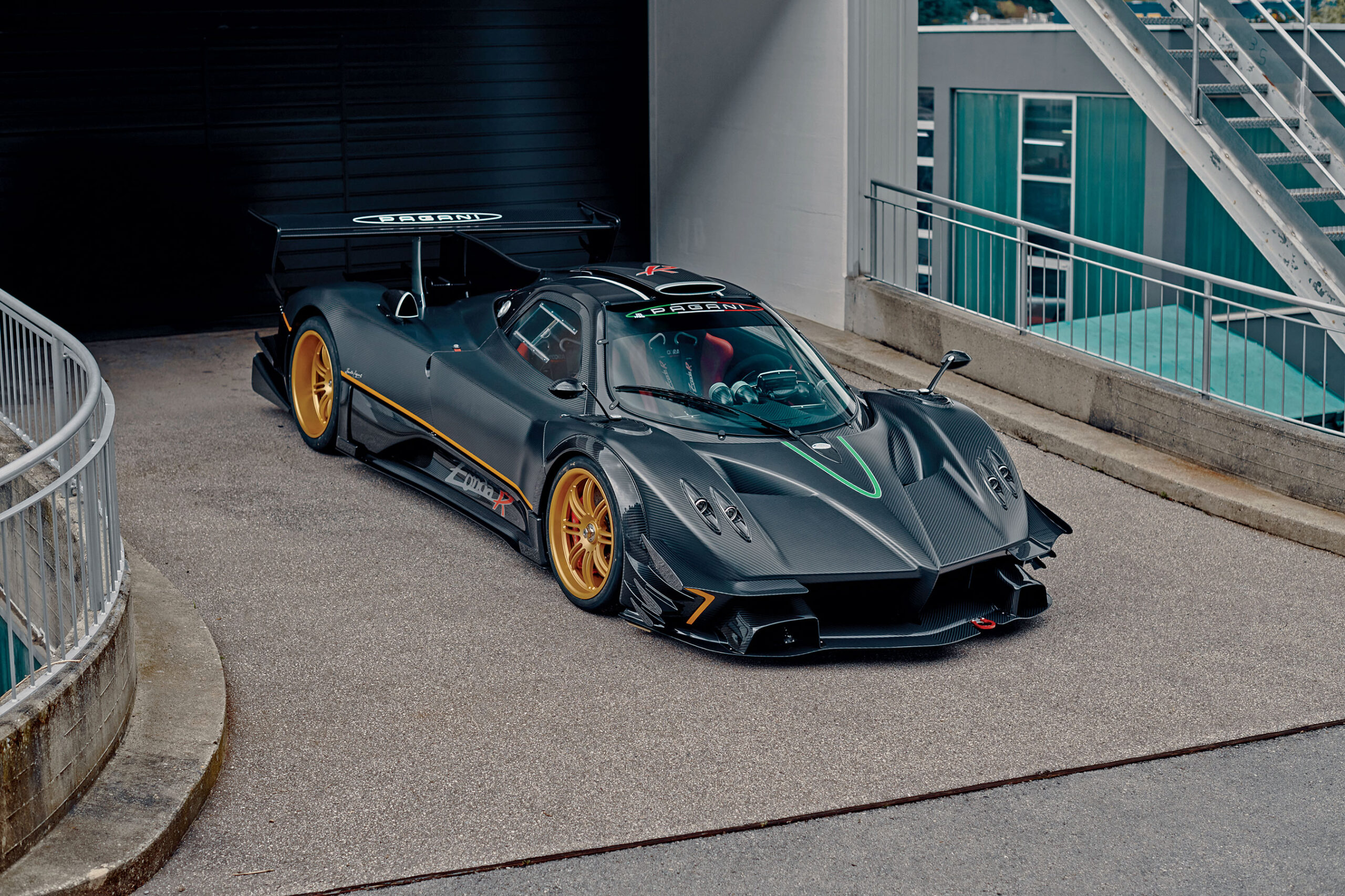In 2007, Pagani introduced its first track-focused model: the Zonda R. As the most fearsome and spartan distillation of the company’s technological capabilities, the Zonda R is truly the marque’s tour de force. Free from race and governmental regulations, the Zonda was designed to be the ultimate driver’s car, offering the ultimate uncompromised driving experience.
The Zonda R’s structure features an advanced iteration of the Zonda F chassis with a carbon-titanium monocoque, a proprietary material developed by Pagani in which titanium and carbon weave are bonded together. The suspension geometry, powertrain, chassis structure and bodywork were specially developed for the model. All told, the Zonda R’s construction reportedly utilizes just 10% of pre-existing parts. In truth, the Zonda R is almost more of a bespoke creation in its own right than it is a road car modified for the track.
The Zonda R is powered by a naturally aspirated Mercedes-Benz CLK GTR-derived 6.0-liter V12 engine producing 780 horsepower, paired with a 6-speed sequential transaxle, which features a multi-disc racing clutch and lightweight magnesium casing. With a fantastic power-to-weight ratio and lightning-quick gear changes, the Zonda R sprints to 60 mph in 2.7 seconds and onward toward a reported top speed over 230 mph.
Quite simply, it is truly a track weapon of the most ferocious variety. In fact, the Zonda R still holds the record as the fastest non-series, production-based, gasoline-powered car to lap the legendary Nürburgring Nordschleife — 13 years after Pagani factory driver Marc Basseng recorded a time of 6:47:00 in July 2010.
The Zonda R “Revolución Specification” offered here is the fifth of 10 “R” examples produced by Pagani between 2009 and 2011. The car was subsequently returned to the factory under previous ownership and upgraded to Revolución specifications in December 2014. The upgrade includes engine and transmission modifications, which provide a bump of 30 hp over stock, as well as a new set of Öhlins dampers, and lightweight magnesium alloy wheels. Downforce was also increased with the addition of a smaller secondary rear wing, while the front bodywork was revised with additional dive planes.
In April 2022, this Zonda R “Revolución Specification” received approximately $27,000 of servicing from Pagani of Beverly Hills, which included a new set of Pirelli tires, new fuel tank and a complete fuel system flush with major engine service. Meanwhile, the car was also fitted — at no cost to the consignor — with Pagani’s most-recent suite of factory-recommended Zonda R driveshaft updates.
Moreover, the next owner of this car is invited to participate in Pagani’s 2023 Arte in Pista program, a series of five thrilling two-day track-driving experiences, an incredible opportunity to explore the performance potential of their Pagani cars.

